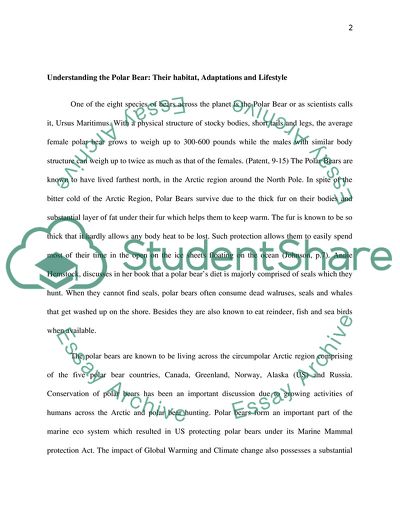Cite this document
(Effect of Global Warming on the Polar Bear Research Paper - 1, n.d.)
Effect of Global Warming on the Polar Bear Research Paper - 1. Retrieved from https://studentshare.org/environmental-studies/1750837-how-climate-changeglobal-warming-affect-the-polar-bear-and-its-surrounding-and-future-predictions
Effect of Global Warming on the Polar Bear Research Paper - 1. Retrieved from https://studentshare.org/environmental-studies/1750837-how-climate-changeglobal-warming-affect-the-polar-bear-and-its-surrounding-and-future-predictions
(Effect of Global Warming on the Polar Bear Research Paper - 1)
Effect of Global Warming on the Polar Bear Research Paper - 1. https://studentshare.org/environmental-studies/1750837-how-climate-changeglobal-warming-affect-the-polar-bear-and-its-surrounding-and-future-predictions.
Effect of Global Warming on the Polar Bear Research Paper - 1. https://studentshare.org/environmental-studies/1750837-how-climate-changeglobal-warming-affect-the-polar-bear-and-its-surrounding-and-future-predictions.
“Effect of Global Warming on the Polar Bear Research Paper - 1”, n.d. https://studentshare.org/environmental-studies/1750837-how-climate-changeglobal-warming-affect-the-polar-bear-and-its-surrounding-and-future-predictions.


